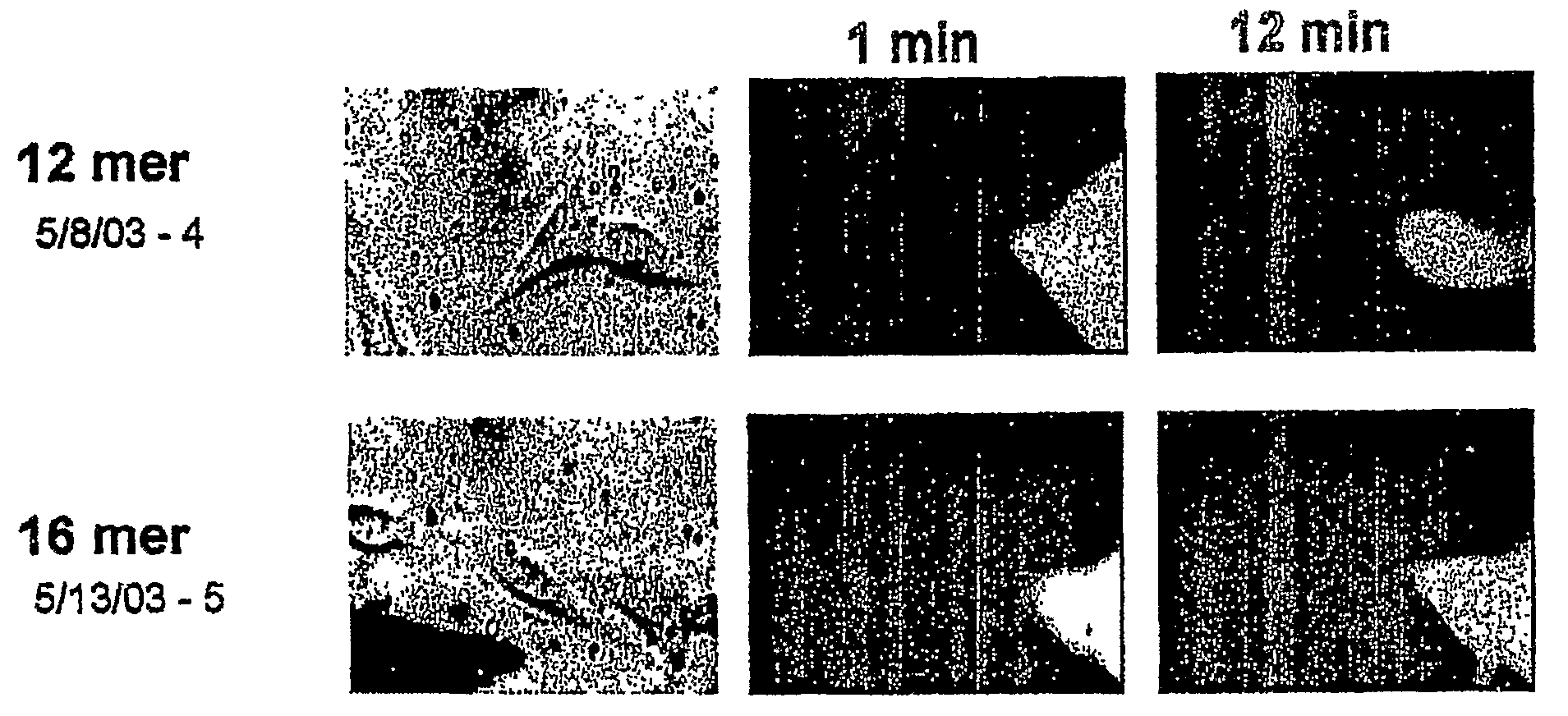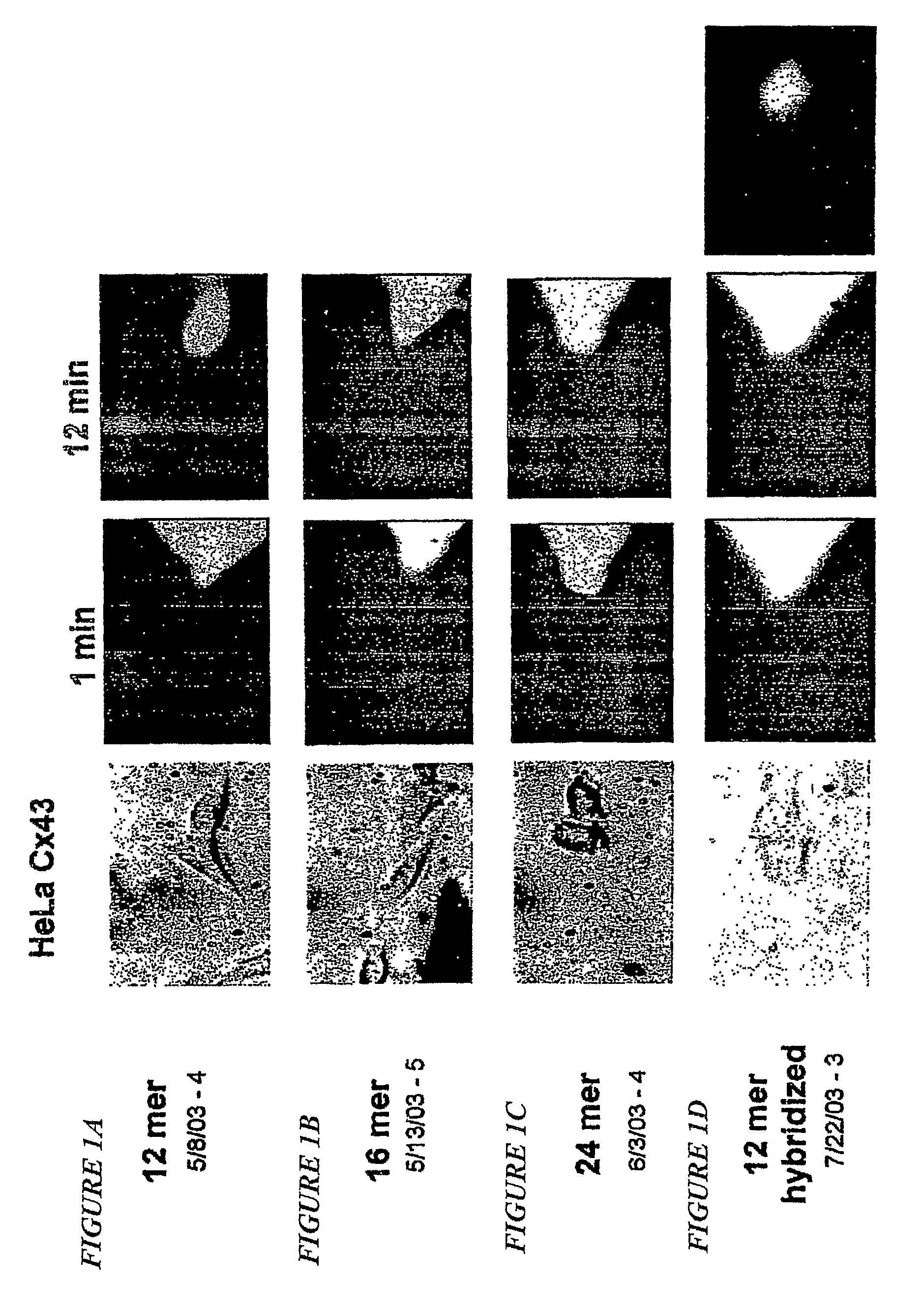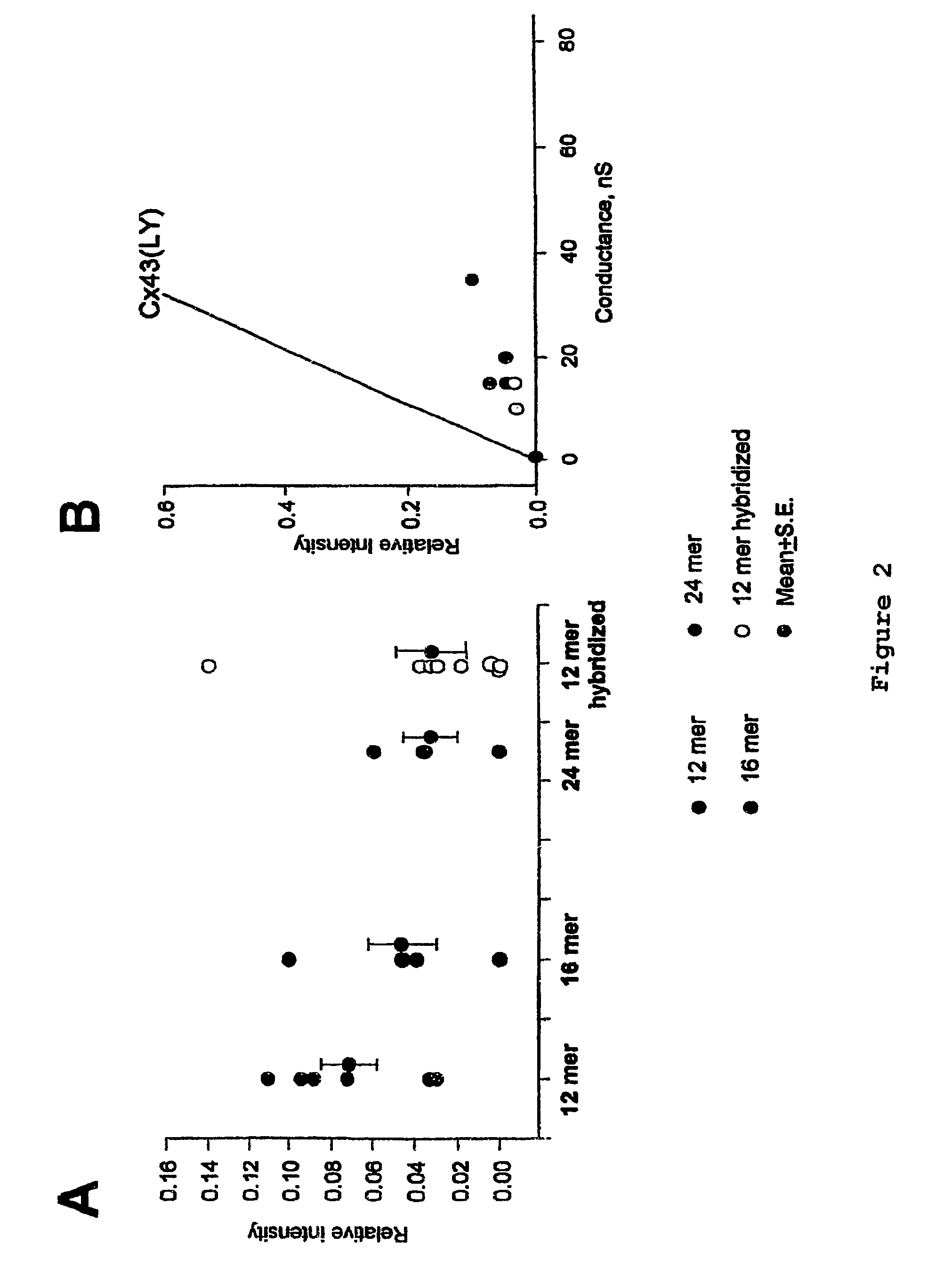Delivery of DNA or RNA via gap junctions from host cells to target cells and a cell-based delivery system for antisense or siRNA
a cell-based delivery system and antisense technology, applied in the direction of biocide, drug composition, genetic material ingredients, etc., can solve the problems that dna, or dna, have not been delivered by host cells, and achieve the effect of influencing the activity of target tissues
- Summary
- Abstract
- Description
- Claims
- Application Information
AI Technical Summary
Benefits of technology
Problems solved by technology
Method used
Image
Examples
Embodiment Construction
[0020]According to the invention, a method of delivering an oligonucleotide or a plasmid expressing an oligonucleotide into a target cell is provided, comprising introducing an oligonucleotide into a donor cell, and contacting the target cell with the donor cell under conditions permitting the donor cell to form a gap junction with the target cell, whereby the oligonucleotide or a product of the oligonucleotide is delivered into the target cell from the donor cell.
[0021]The oligonucleotide may be RNA that can traverse the gap junction or be transcribed into a peptide that can traverse the gap junction. The oligonucleotide may be DNA. The oligonucleotide may be an antisense oligonucleotide or a cDNA that produces an antisense oligonucleotide that can traverse the gap junction. The oligonucleotide may be a siRNA oligonucleotide or a cDNA that produces a siRNA oligonucleotide that can traverse the gap junction. The oligonucleotide may be a DNA or RNA that produces a peptide that can tr...
PUM
| Property | Measurement | Unit |
|---|---|---|
| diameter | aaaaa | aaaaa |
| length | aaaaa | aaaaa |
| junctional conductance | aaaaa | aaaaa |
Abstract
Description
Claims
Application Information
 Login to View More
Login to View More - R&D
- Intellectual Property
- Life Sciences
- Materials
- Tech Scout
- Unparalleled Data Quality
- Higher Quality Content
- 60% Fewer Hallucinations
Browse by: Latest US Patents, China's latest patents, Technical Efficacy Thesaurus, Application Domain, Technology Topic, Popular Technical Reports.
© 2025 PatSnap. All rights reserved.Legal|Privacy policy|Modern Slavery Act Transparency Statement|Sitemap|About US| Contact US: help@patsnap.com



